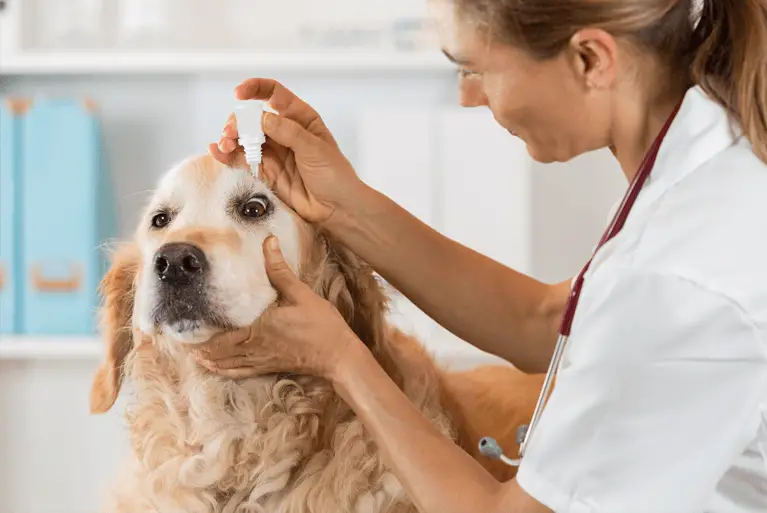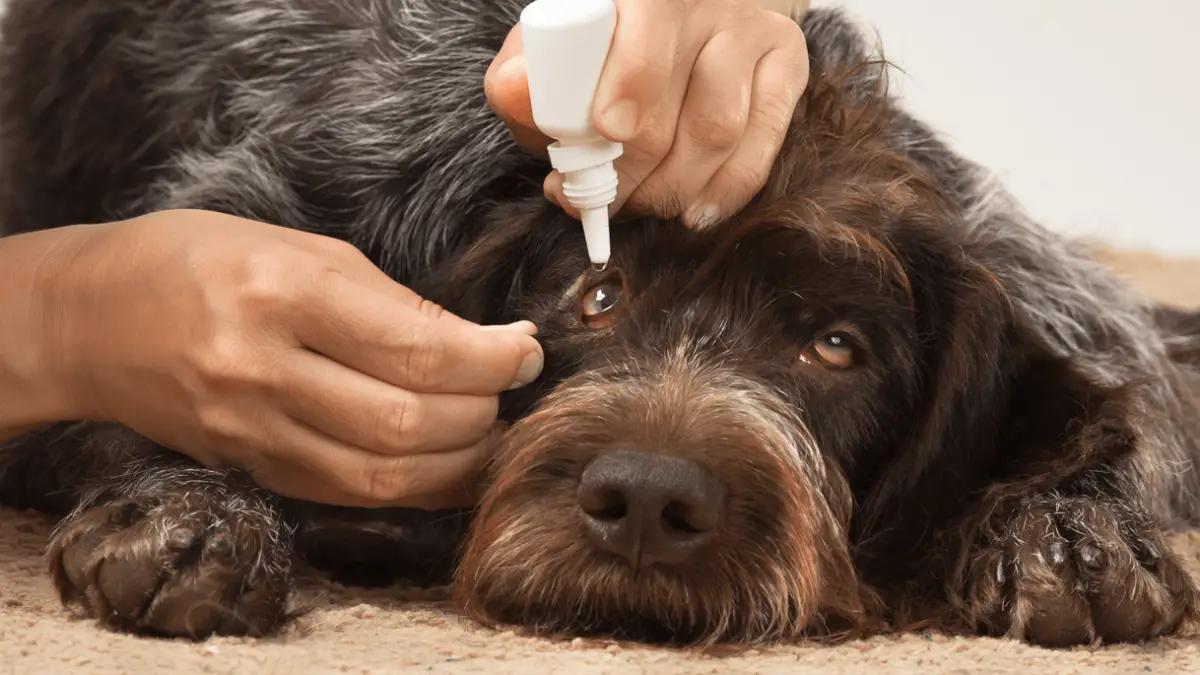Dog Eye Infection - Causes & Treatment
10.11.2020.
Eye infections are a common dog problem and can often occur without any evident reason. If you notice that your dog’s eye is irritated is usually a sign, and sometimes, it is hard to differentiate infection from injury or allergies from infections. If you are concerned about your dog’s vision and health, here is what you need to know about dog eye infections.
Most common eye infection symptoms
- Eye discharge - Dog eye discharge is usually a common sign of infection. Some people describe it as “dog eye boogers.” There are different types of eye discharge, and each of them indicates a different problem.
- Redness - If eyes appear pinker or even redder than usual, it might be a sign of an eye infection.
- Swelling - If one or both eyelids are swollen and bigger than usual, it might be an eye infection.
- Pawing - If your dog is continuously pawing at their eye, it is usually a sign that there is something there that shouldn’t be there. It is most likely an eye injury or an infection.
- Squinting - If your dog is squinting in one or both eyes, it can be a sign of infection. The same goes for rapid blinking or light sensitivity.
It is most likely that two or more symptoms occur at once, like a squinty, red-eye with a discharge or a “dog eye booger.” If there is an infection, your dog’s immune system is trying to combat it with these symptoms (inflammation, redness, etc.). Those symptoms can be painful and discomforting for your dog, and that is when pawing starts.
If your dog is suffering from allergies, some of the symptoms can be pretty similar, so if you are worried about your dog, make sure you get a good dog ophthalmologist to make a full assessment of your dog.

What causes a dog eye infection?
There are two possibilities your dog can get an eye infection, and that reason is either a bacteria or a virus.
Bacterial
Bacterial eye infections are the most common, and various bacteria cause them. For bacteria to infect a dog’s eye, it needs an opportunity to get there. If your dog suffered an injury to the eye or dry eye disease, that would be a perfect opportunity for a bacteria to get into your dog’s eyes.
Dog’s eyes have a great “defense system,” and it usually takes care of bacteria by itself. If a bacteria gets in an eye, it can be easily “cleaned out” by the tear film. A bacteria alone rarely cause an eye infection; it is mostly after an eye injury.
Bacterial eye infections are often caused by other “eye intruders,” such as debris or hair. These unwanted foreign bodies can get lodged in the dog’s third eyelid. There, these intruders might cause an infection if not taken care of and removed.
Viral
Viruses cause viral eye infections, and they are “infectious agents made of protein and nucleic acid.” Diseases like canine distemper can cause viral eye infections. These infections are usually quite limiting, and the most significant problems occur if a bacterial infection follows a viral infection.
It is good that viral infections are not that worrying, but only if your dog is regularly vaccinated.
Symptoms of both viral and bacterial eye infections can seem pretty similar, and sometimes, owners are not sure which one is it. If you also notice fever, lethargy, and nasal discharge, it is most likely a viral infection.

Things that look like an eye infection but are not
If you are worried about your dog’s eyes and are thinking it’s an eye infection, it would be wise to know that some issues can seem like an eye infection but are not. There are known eye problems that cause various problems and can include the same symptoms as an eye infection, and those problems are;
- Tear duct issues (often found in Cockers and Poodles)
- Glaucoma
- Eye tumors
- Vitamin deficiency
- Entropion
- Cherry eye
Diagnosis of eye infections
Dog eye exams are quite similar to those of humans. The biggest exception is it is hard for dogs to read the charts ophthalmologists have on the wall. According to the American College of Veterinary Ophthalmologists, a dog eye exam consists of;
- Visual examination with a focal light source
- IOP test
- Dilation to examine the back of the eye
- Schirmer Tear Test (tear production test)
- Allergy test
- Bacterial test and culture
- Corneal staining
Using these advanced methods of diagnosing, vets can accurately determine the main issue a dog is experiencing and prescribe the most effective treatment.
Eye infection treatment
After vets determined the cause of the eye infection, they will conduct a treatment plan that will get the best results for your dog. Treating infections will most likely involve drops or ointments.
Eye drops for dogs are the most popular way to handle eye infection problems. It is an easy, non-messy way to handle such a delicate issue. If you are visiting your vet, ask them about eye drops for dogs.
There are two important things to do if treating your dog’s eye infection; keeping the infected area clean and using a dog cone.
Cleaning the area full of puss or discharge can promote healing and help your dog fight the infection. Use a cotton swab or a soft cloth damped only with warm water. It is essential not to use any chemicals, alcohol, peroxide, or other things you might find in your local drug store. You can use non-medicated sterile saline to rinse your dog’s eyes only after your vet allowed it.
You should never use human eye drops for your dog. They can contain chemicals that are not safe for dogs.
The second thing you should do is use a dog cone. A cone will prevent your dog from scratching the infected area long enough for the medication to do what they were supposed to do. It will also prevent any further eye damage.
World Dog Finder team







Share